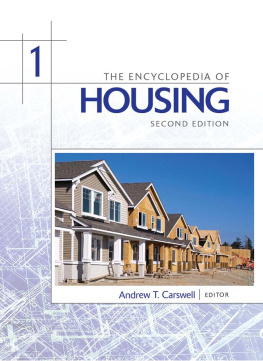First published 1998 by Ashgate Publishing
Reissued 2018 by Routledge
2 Park Square, Milton Park, Abingdon, Oxon, 0X14 4RN
711 Third Avenue, New York, NY 10017, USA
Routledge is an imprint of the Taylor & Francis Group, an informa business
Copyright Andrew Golland 1998
All rights reserved. No part of this book may be reprinted or reproduced or utilised in any form or by any electronic, mechanical, or other means, now known or hereafter invented, including photocopying and recording, or in any information storage or retrieval system, without permission in writing from the publishers.
Notice:
Product or corporate names may be trademarks or registered trademarks, and are used only for identification and explanation without intent to infringe.
Publishers Note
The publisher has gone to great lengths to ensure the quality of this reprint but points out that some imperfections in the original copies may be apparent.
Disclaimer
The publisher has made every effort to trace copyright holders and welcomes correspondence from those they have been unable to contact.
A Library of Congress record exists under LC control number: 98073403
ISBN 13: 978-1-138-34547-8 (hbk)
ISBN 13: 978-1-138-34549-2 (pbk)
ISBN 13: 978-0-429-43785-4 (ebk)
The investigation of European systems of housing supply springs from an interest in both the house building and land supply process, as well as from a desire to look further at the links between social science methods and housing. Coming from a land management perspective, I was initially interested in the potential application of economic theory for housing supply and how a number of frameworks might help to explain housing outcomes. Having taken the comparative direction however, I found the initial way to be a difficult route. In bringing together all the important facets which make up housing systems, it was necessary to utilise a more holistic framework drawing on a range of social science methods. In doing this, I believe that I am in good company although I have, throughout the book, attempted to clarify where I differ, or concur, with other researchers in the field.
Assisting me with my PhD dissertation, from which this book emanates, have been my two supervisors, Professor Michael Oxley and Norma Carter, also of the Department of Land Management. They have greatly encouraged me in the social science method and have ensured that sufficient financial means have been available to make visits abroad to the respective countries where I have learnt first hand about planning, land and housing policies. To them, I express my gratitude. The establishment of a Centre for Comparative Housing Research in 1995 under the direction of Professor Oxley, has proven to be a great incentive for the furthering and completion of this work. During the time of writing, comparative research has been carried out for The British Council, The Joseph Rowntree Foundation and the Royal Institution of Chartered Surveyors. In addition, several research projects on housing markets and housing need in the local and regional area have been carried out. This experience has assisted me in balancing the analysis of the different countries.
The countries which are compared in the book are the United Kingdom, the Netherlands and Germany. There is a scientific rationale for choosing this framework, which is given in the Introduction. However, no scientific experiment can be carried out without the necessary components and instruments. It is thus important to state that of all the European countries, these three provide a reasonably good range of comparable data on housing supply and land markets. This does not mean that the findings of the research are foolproof; more that the statistical work can at least be challenged in the future. Another pragmatic reason for choosing these three countries is related to language skills, where some personal experience has been helpful. In addition, there have been several researchers in the other countries, who have always been very willing to assist, not only with the specific texts, but also in explaining more generally about the individual housing systems. In these respects, I would like to thank in particular Dr Peter Boelhouwer and Drs Marjolein Spaans of the OTB Research Institute at the University of Delft, and also Dr Thomas Hafner of the Stdtebauliches Institut, University of Stuttgart. These individuals have always been especially prepared to discuss comparative issues, or organise visits for me in the Netherlands and Germany. This has been of great assistance.
The results, findings and outcomes from the broader comparative research programme are provided in a number of places including this book. Elsewhere, the reader is referred to articles by the author including Golland (1996;1994) and Spaans et al (1996). The first of these articles emanated from the European Network for Housing Researchs Young Housing Researchers Conference held in Vienna in 1995. This was organised by a colleague from the Centre of Comparative Housing Research, Jacqueline Smith, and which proved to be a very useful forum for all in the transition stage to full PhD status. Otherwise, a number of papers were disseminated at academic and policy seminars and forums over the past four or five years. Despite these opportunities, the challenge of keeping apace with European housing policy developments has been considerable. Many European countries, rightly, or wrongly, have moved further in favour of market solutions since the mid 1990s and another book is no doubt needed to deal with the very latest developments. However, convergence is a slow process, and considerable differences do still exist between European housing systems. It is hoped that this book, as a free-standing study, can illuminate these differences fully, and show what happens in housing supply under different political and economic circumstances.
There are many individuals and organisations to whom I owe my thanks. Of great importance has been the funding from the Polytechnic and University Funding Council, and my thanks are to Professor Brian Field, formerly Head of the School of the Built Environment, for his continued support of the housing research focus at the University. In addition, there are colleagues at the Centre for Comparative Housing Research whom I should like to thank. In particular, Dr Tim Brown and Dr Peter King who have assisted at various points along the way with methodological and theoretical issues. In assembling the comparative information, I have been greatly assisted by a number of individuals at housing and planning ministries. Particular thanks go to Mr Rob Ligterink and Drs Matth van Oostrum at the Dutch Ministry of Housing, Mr Lentes at the German Ministry for Planning, Housing and Urban Development and Mr Rob Ellison at the Department of the Environment. Many interviews have taken place and I should like to thank, amongst others, the following for helping with the substantive issues: Professor H. Dieterich of the University of Dortmund, Dr B. Needham of the University of Nijmegen, Professor H. Priemus of OTB, Technical University of Delft, Mr N. Rietdijk of the Netherlands Building Federation and Mr J. Vermeer of the Province of South Holland.
Finally, I owe a great debt of gratitude to all my family who have assisted along the way. To my mother and father, who ultimately set me on housing route. To my wife, who now has me lined up for some DIY on our own housing system and to the children who have amused themselves during innumerable weekend hours without my attendance.





